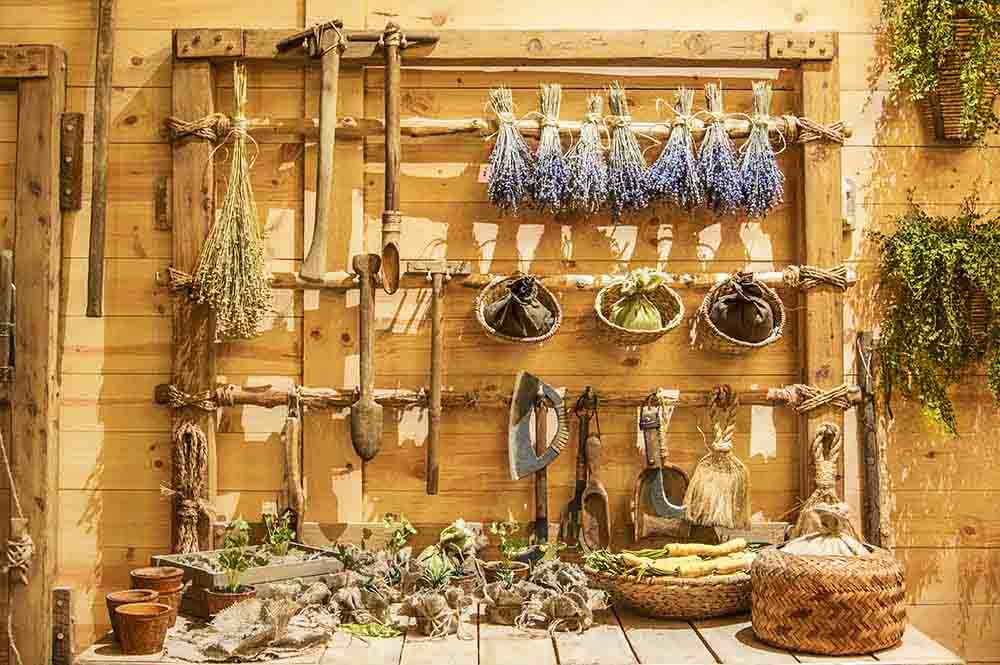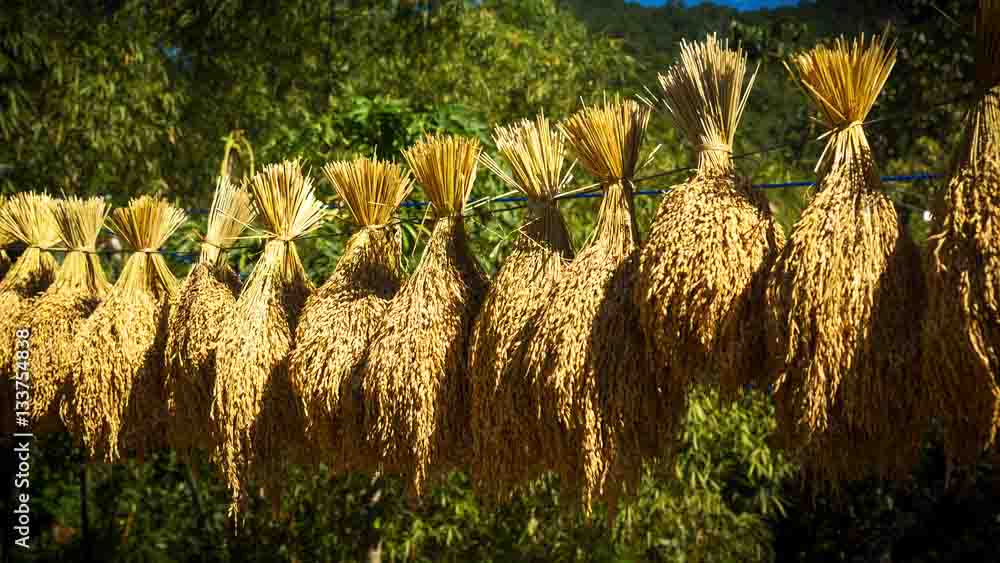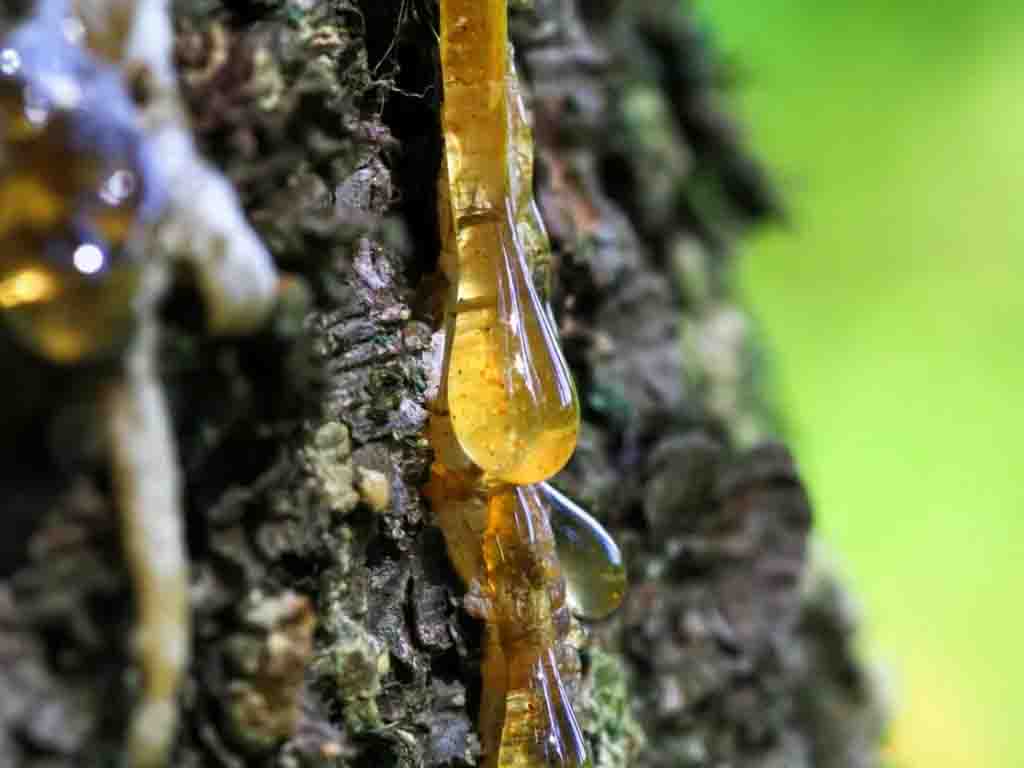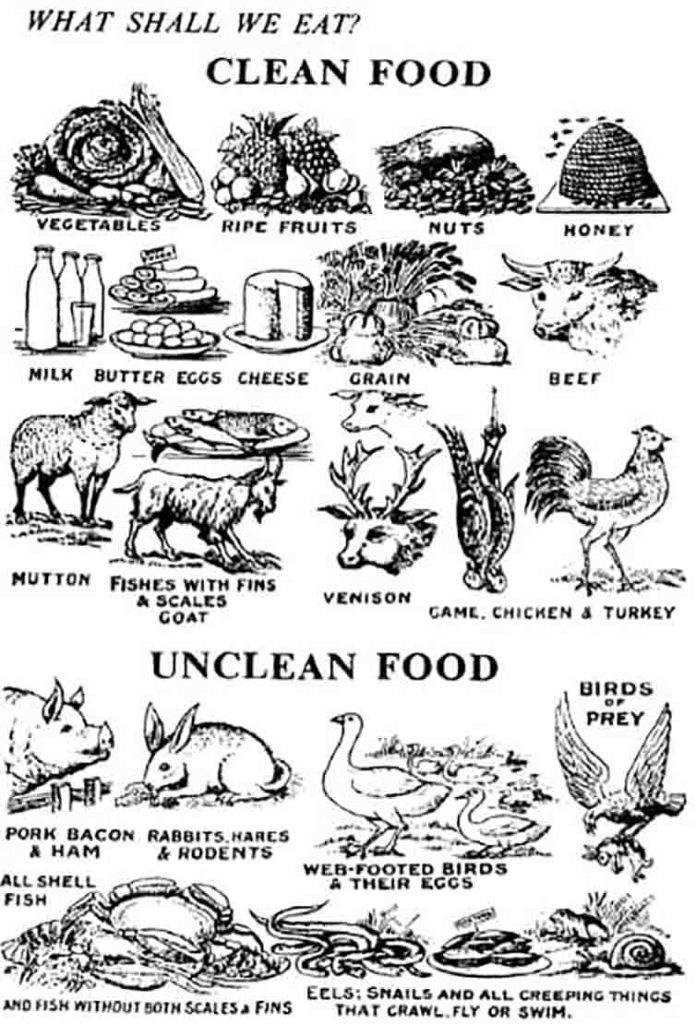52 Weeks in the Ark with Noah and Family (WEEK 22) – Food Preservation and Dietary Rules in Noah’s Time

“And you shall take for yourself of all food that is eaten, and you shall gather it to yourself; and it shall be food for you and for them.”
WEEK 22 (22th to 28th of Tishrei, the 7th Month, in the Hebrew Religious Calendar)
In the Garden, Elohim established the kind of food needed and appropriate for human consumption: whatever trees (or plants) produced); that is, fruits and, perhaps, leaves, saps, piths, or flowers of trees.
“Then the Lord Elohim took the man and put him in the garden of Eden to tend and keep it. And the Lord Elohim commanded the man, saying, “Of every tree of the garden you may freely eat; but of the tree of the knowledge of good and evil you shall not eat, for in the day that you eat of it you shall surely die.”
This commandment remained in force until the time of Noah. It was only after the Flood that Noah and his family were allowed to eat meat. After all, the food they had taken with them in the Ark may have all run out or expired in quality. You can only stand eating so much dried or rehydrated food for a certain time; what more for a year? After a year, Noah could kill an animal to eat something else, rightly and literally! In fact, they took with them the “clean” food that would become their food in the bleak, deserted Earth after the Flood. That means they could eat of the “clean” animals, of which they took 7 pairs of each kind, but not of the “unclean” animals, of which they brought only a pair of each kind. Eating a pig or a horse would have rendered either species extinct. That should be clear enough even for us omnivores.
How Drying Plants and Fruits Fed the Ark Passengers
Living for a whole year and a week in the Ark (371 days) was the greatest challenge ever given to a family in history. Of course, next to the 120 years of building the Ark itself! And the primary consideration that Noah had to deal with had to do with feeding all the passengers. Noah was a caterer as well! It stands to reason that the main concern was not the amount of food but how to preserve the food and store it. How did they preserve veggies and fruits?

Drying vegetables, grains and fruits was, perhaps, the main process available for Noah then, considering the lack of convenient modern technologies we now have, such as freezing, canning and chemical preservation. One thing Noah had plenty of then was sunlight – no rain had fallen on the Earth; meaning each day must have been cloudless; for storms were not yet a climatic phenomenon. As we said from our understanding of scriptures, water was still mainly stored above the raqia or firmament in the sky and in the deep wells within the Earth. Also, the few (only 4 major) rivers and small oceans, plus the absence of high mountain ranges then, could not support the Water Cycle and the meteorological conditions that exist today. Evaporation of that limited amount of surface water would not sustain a stable rainfall mechanism, except for the mist that watered Eden. (Gen. 2:4-6) Therefore, all that water that came down and came up during the Flood changed everything and established the global climate that we now have today. For Noah then, drying plants and produce was as easy as picking them and keeping them under the Sun then stored in pottery, air-tight crates or animal skins (for wine and juices, especially) and eaten at any time, as is or by adding water to make it soft and chewable as if it were fresh again. This was convenient, as burning wood to cook inside the Ark may not have been advisable.
Think about the how the world then may have been substantially less-populated by harmful bacteria and viruses than it is today. If there were only a few hundreds of thousands of people then, it stands to reason that the amount of microorganisms that might have multiplied could have been also much less compared to what it is today. And it follows, fewer harmful or “corrupted” organisms were also around to cause the diseases that have developed and spread throughout history. That is why people like Methuselah, Lamech and Noah could live up to about 800 or 900 or more. It was not only because they were righteous or followed the ways of Elohim passed on to them since the beginning but also because the chances of getting sick from infection were much lower. Besides, it was only during the time of Jared and Enoch that the Nephilim or children of the fallen angels experimented with animals and, probably also plants, to interbreed them and create “unclean hybrid versions” of Creation-made animal and plant DNA. (Check this article for a discussion on how the fallen angels corrupted Creation: WEEK 14)
We talked about how Noah separated the “clean” and “unclean” animals due to the result of this evil genetic manipulation of Creation which is still being practiced by demonic beings today. This unrecognized wicked act of Yah’s enemies may well have brought about the rapid degradation of Nature and, thereby, led to the corruption of the human physiological capability to properly respond and counteract debilitating changes in the environment. We now know that this is the ongoing tug-of-war between civilization and the degraded global ecosystems we have long used and abused without truly considering the original, divine designs, purposes and applications of every aspect of Creation – from the single-celled organism, to the majestic tree, to the agile animal, to the intelligent human.
In a perfect environment such as Paradise where humans were designed to live perpetually, the corruptive and malevolent effects of “unclean” organisms or living beings bred by fallen angels could neither exist nor lead to the corruption or death of divinely-created living beings. The curse on the ground brought about the decay of Creation and its component systems and the reduction of the Earth’s ability to sustain perpetual life. Adding the effects of demonic tweaking of animal, plants and human genes through interbreeding, we can then see the decay of once-efficient systems that we now endeavor to repair or engineer, using modern medical procedures and technological innovations, in order to remove the life-shortening and life-threatening problems they produce. All these expensive and sophisticated human methods we use were not available to Noah; and yet he lived to be 950 with nothing but clean, fresh food and one year of well-preserved, dried food!
Cooking or Drying?
There is also the possibility that Noah and his family preserved plants and fruits through cooking as a means of processing food for future consumption. But again, this is assuming it was at all necessary to “sterilize” or “clean” food of germs and bacteria through high heat. For exposing veggies and fruits to sunlight can attain temperatures ranging from 35°C to above 60°C, although at 60°C and above, they could lose a lot of nutrients. Thus, cooking at much higher temperatures would basically evaporate or destroy a lot of the nutrients along with the water, particularly vitamins. Blanching at below 60°C is advisable; and this could have been used by Noah for certain plants and animals that allowed minimal processing.
According to the World Vegetable Center in Tanzania, Africa, “Vegetables dried to less than 10% will keep for more than six months when packed and stored in the right conditions.” (USAID) With lesser contamination to “unclean” organisms in ancient times, Noah could have had resorted to simple solar-drying that allowed him to store food for a year or more. So, did Noah use some form of solar-drying methods and tools to process their Ark food? Most certainly. If he could design and build a huge vessel which served to support and save human and animal life for a year, how hard was it for him to make a simple veggie-and-fruit dryer? Adam was taught by Elohim to make animal-skin garments to cover his and Havah’s nakedness, which definitely required drying a dead-animal’s skin under the Sun while burning the meat and the rest of the innards. (Gen. 3:21)
How the Ancients Reduced Contamination and the Spread of Diseases
Drying food basically depends on the temperature at which the process is done; but this is true only under the general global conditions we now live in. As we said, with less bacteria and viruses, drying in the time of Noah could have been as simple as exposing the plants and fruits to the Sun and letting it dry naturally without so much as the fear of contamination from flies and insects that carried germs and bacteria that have the potential to develop various diseases that have proliferated through the millennia. To assume all these deadly disease-bearing organisms were present since the beginning not only destroys the Theory of Evolution but, more so, the intentions of Divine Creation. As such, perhaps, salt and other natural preservatives we may have never heard of must have provided the basic chemical ingredients needed to eliminate whatever harmful organisms were present in the ancient environment. Salt, however, remains the common person’s potent weapon against food spoilage.

Noah, as we had mentioned before, did write a book which taught humans which plants could cure certain illnesses. Moses said so in Jubilees 21:10. That could mean Noah had indeed identified certain maladies which could have been caused by microorganisms or physiological defects he could have had also identified. Certainly, preserving food was part of his broad understanding of Creation. Noah was also a doctor! There is more actually: He designed the Ark to have an efficient freshwater and wastewater system — he was also a plumber! He did know how to avoid sickness acquired through contamination. More on that later on.
Part of Noah’s being righteous was his avoidance of the use of whatever technological or, in his case, fallen-angel magical or illicit knowledge needed for such mundane tasks as agriculture, husbandry (or raising animals), preparing food, and sacrificing animals. Perhaps, the act of killing an animal and pouring its blood into the ground and then burning the dead body as a sacrifice to Yah was the most safe and less-contaminating method of removing whatever harmful organisms were in the animal. Besides, a year-old animal was required, lessening further any disease-causing organisms it would have carried or bred within its organs if it were much older. Moreover, Noah planted only pure, organic seeds, a basic step in achieving organic and bountiful harvest. Today, other than mushrooms, perhaps, we can hardly find unaltered seeds to plant since the beginning. Everything has been touched by some form of chemical or genetic tampering. The interbreeding of plants and animals has definitely weakened the quality of most, if not all, life-forms, as the resulting hybrids do not possess the pure traits that once made them resistant to diseases and, thereby, attain longevity.
If Noah could live to about a thousand, why could a cow not live to be 100 or 300 and keep on giving milk and plowing for as long as it remains alive and strong? Having 3 or 5 of them would have been enough to maintain a family and a farm for centuries. That is exactly the initial intention of Elohim creating humans and letting them live in a garden with all the animals they needed to help them maintain it. That is, to help them plow, pollinate, harvest fruits, thresh grains, fertilize the soil, travel great distances on land, sea and air (as we had speculated), and communicate accordingly — and all that without having to eat animals! The enmity between humans and animals was a great price to pay for violating the basic intentions of the Creator. Like the serpent forced to crawl on the cursed ground, we now have eat food grown out of the same cursed ground. Sin is the worst disease of all.

The Parallelism Between Plants and Animals
The sap of plants, which contains water, hormones and enzymes, parallels the blood of animals. Drying plants is essentially the same as bleeding an animal of its life. Cutting a plant or separating it from the ground is the same as killing an animal. Since Noah was not allowed to eat an animal before the Flood, he did not kill an animal except as an offering to Yah. However, “killing” plants was allowed to sustain human life. Ironically, while plants manufacture food using sunlight, sunlight also dries plants of its life, which is in the water, and preserves it for humans to eat as dried food. Perhaps, people then did not need to dry food so much because of the fertile land, unless there was famine or a surplus of harvest; in which case, preserving food was a practical step for securing human health and existence during difficult time. In Noah’s case, we assume he was the first one to have made use of the method on a massive scale and in an efficient way that would benefit not only his family but the animals they took care of. The life of the whole world, including ours, depended on him doing it right. And we know he did it right.
Today, it is not just the sap of trees and the blood of animals that are gradually drying out or draining down mercilessly due to human corrupt and devious manipulations; the lifeblood or the very ruach (spiritual essence) of millions of humans are being destroyed through ungodly philosophies, doctrines, traditions, innovations and systems, bringing us closer to the end of “Noah’s Days Part 2”. All the edible, untampered Creation-made life-forms or organisms that can sustain human life at its optimum level will eventually be diminished, if not outlawed, by Yah’s archenemy who now aggressively orchestrates the ultimate, global enslavement of Yah’s children to his wicked ways. This is no science-fiction, myth or theory to laugh at or mock. This is Flood giving way to Fire on Judgment Day. And when intense fire does its work, all of Creation will be destroyed, leaving nothing — not even dry bones or dust.
